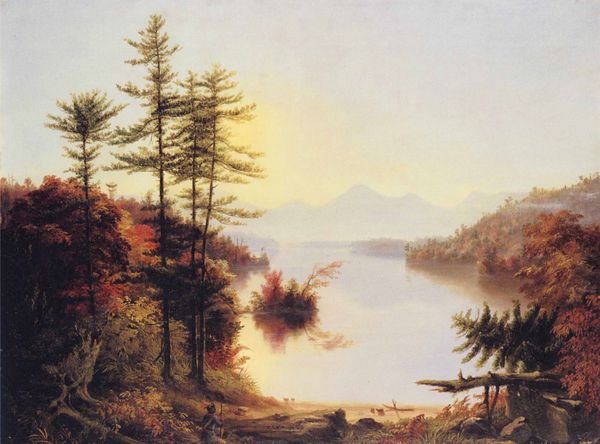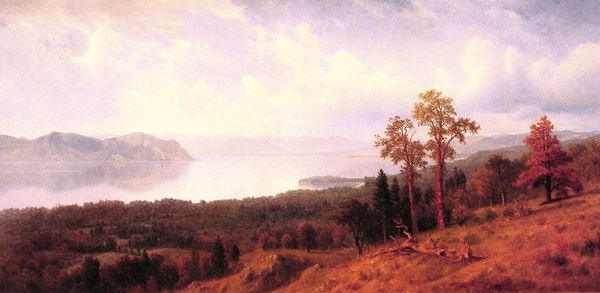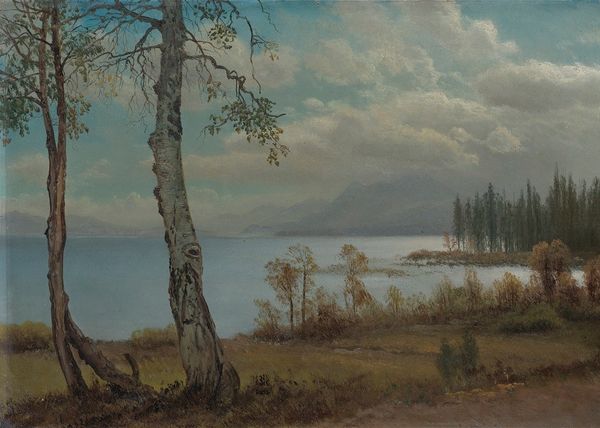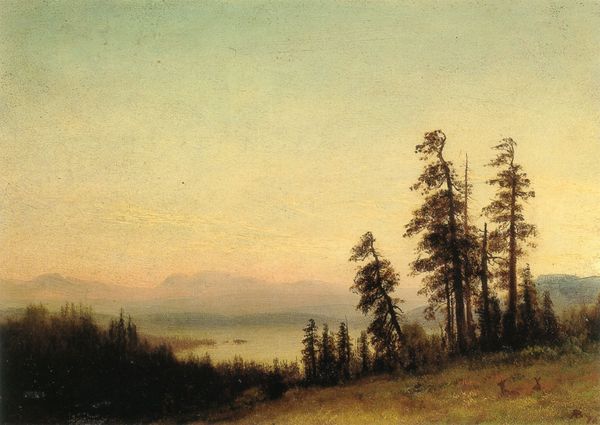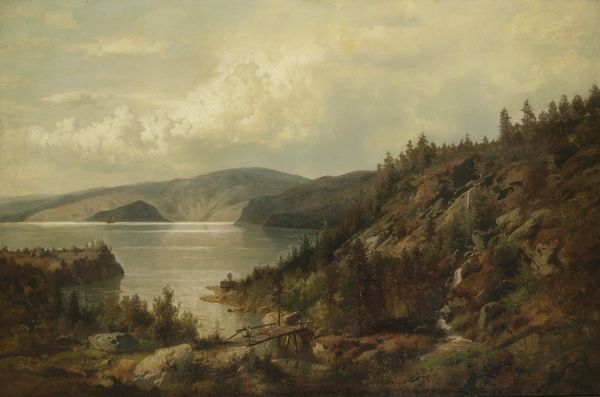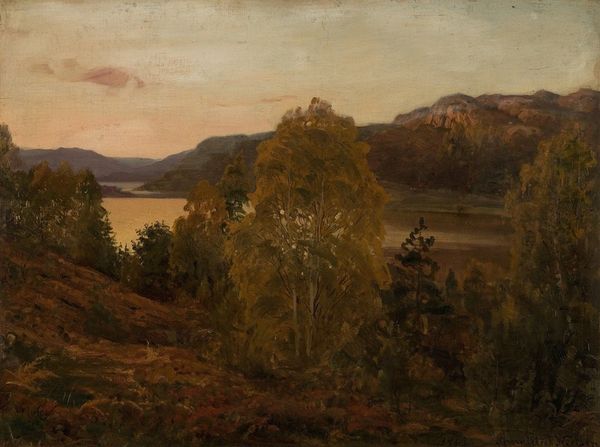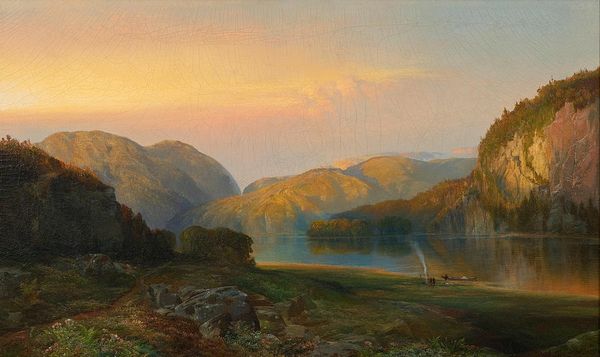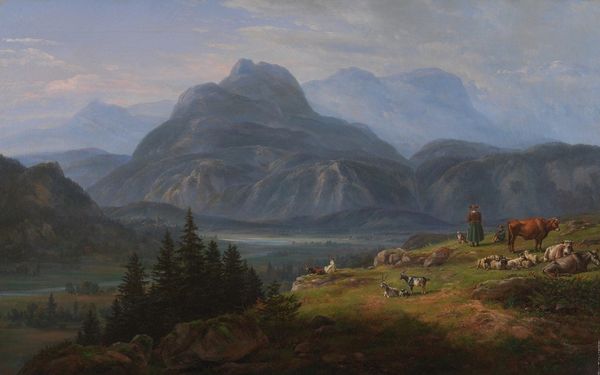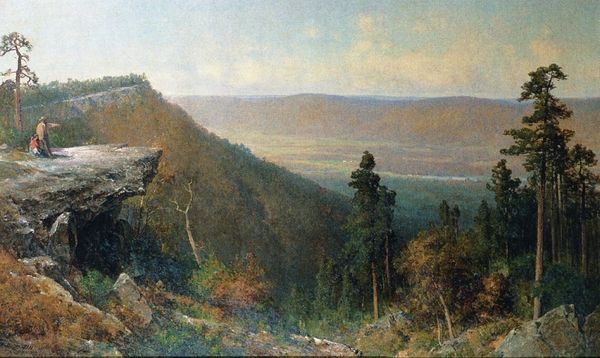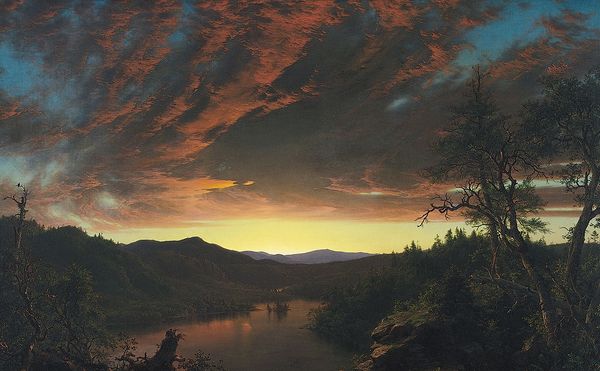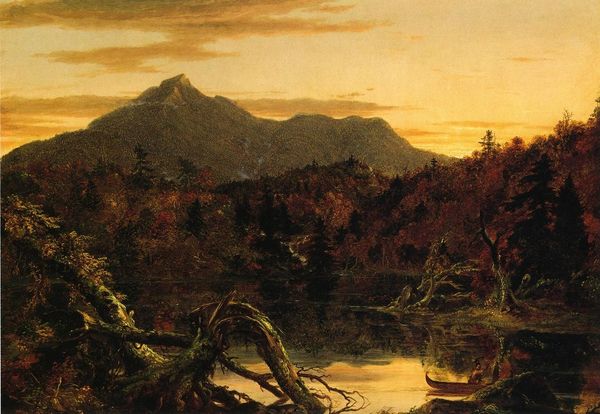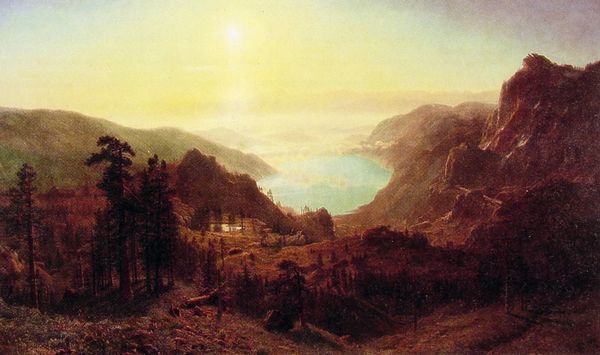
Copyright: Public Domain: Artvee
John Atkinson Grimshaw’s “Windermere” invites us into a landscape that is both romantic and subtly revealing of its time. Grimshaw, working in the Victorian era, captured the aesthetic longings of a society undergoing rapid industrial change. Here, the tranquil lake and soft sunset, act as a respite from the grim realities of urban life. However, it's worth noting who had access to these idyllic escapes. While Grimshaw's paintings were enjoyed by the burgeoning middle class, the actual experience of leisure in the countryside was often limited by class and social status. The figures are small and anonymous, perhaps reflecting the era's changing social landscape, where individual identity was increasingly shaped by broader social forces. This painting, while seemingly straightforward in its beauty, prompts us to consider the complex relationship between landscape, identity, and the social structures that shape our experiences. It reminds us that even the most serene images are embedded in a web of cultural and historical contexts.
Comments
No comments
Be the first to comment and join the conversation on the ultimate creative platform.
